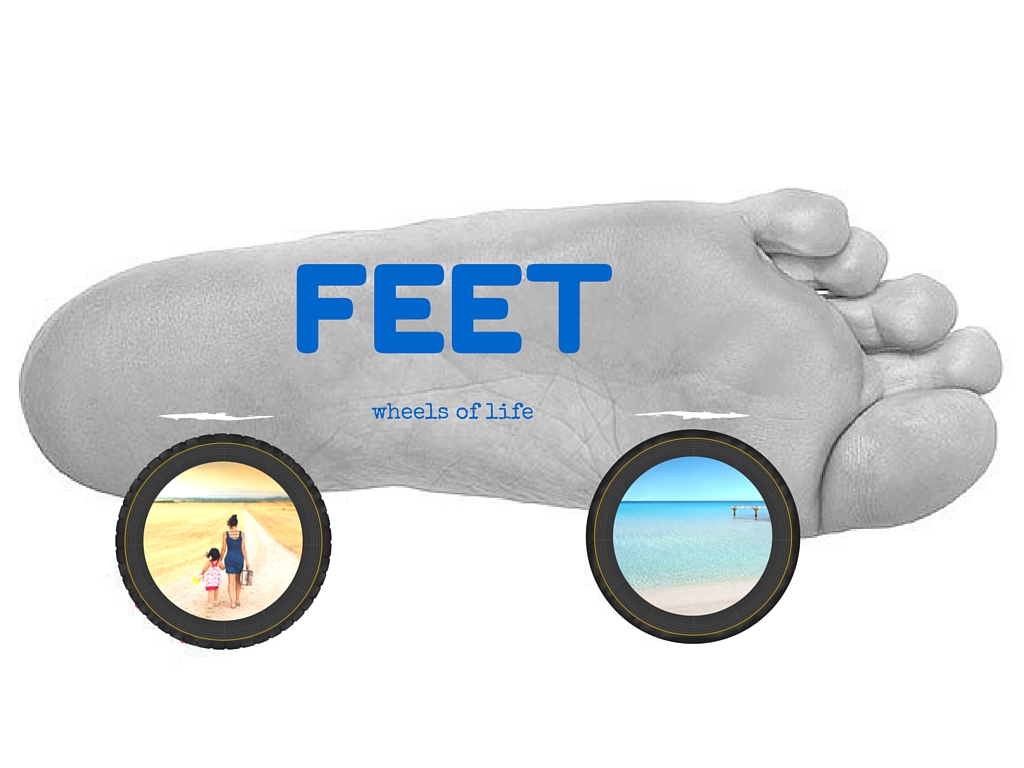I love a discussion with clients and on the web because it presents ideas, different perspectives and criticisms too. I’ve found over the current duration of my career is that there is not a clear understanding of Foot Orthoses (or Orthotics) – the support appliance, splint for the feet.

The Greek prefix ‘Orthos’ means straight and that is definitely what an orthotic is supposed to do, to realign. Orthoses can be fully customised, partially or pre-made depending on the severity poor foot posture, pain, body weight, usage and of course budget.
Here I present to you my most commonly asked questions regarding Foot Orthoses:
Why?
I’m proudly nicknamed “The Foot Mechanic” because I compare poor foot posture to poor wheel alignment in a vehicle. If my car’s wheel alignment is not in order then the effect can be detrimental, affecting my tyre, suspension and axles wear and tear. It will also utilise more petrol as I have to pump more petrol into the engine to power acceleration with poor wheel alignment.
The comparison can be made with prescription glasses from the optometrist. If I have poor sight then I will require prescription eyewear to support and aid eye function so I can complete my daily activities. If I don’t wear glasses to correct poor vision then I can cause eye strain, migraines and fatigue.
I can safely say that most people disregard and neglect their poor feet. If pain were to occur or experienced, people would generally wait, watch or hope that this discomfort would magically disappear so that they can continue with their daily lives. But the poor feet have to carry you and your handbags, shoes, balls, bats, luggage, and tools for many hours a day! Therefore if your feet are giving you trouble, i.e. pain and soreness you would need to wear foot posture supportive orthoses. (Please note: That’s half the treatment plan! Read on to find out more!)

IT IS NOT NORMAL TO HAVE FOOT PAIN – Get it checked!
How are Custom orthoses made?
Nowadays there is a mix of methods to making orthoses which can range from plaster models to 3D imaging. In my opinion it’s the new computerised tech which would give a more accurate orthotic.
After a Podiatrist (not Physios, Chiros or anyone else) has assessed your foot posture using their knowledge and science of biomechanics they would design a foot orthotic that is aimed at counteracting poor ankle, heel, arch and forefoot angles so that your feet can move in its most efficient and effective position thereby reducing your energy consumption when you walk.
Next the base material selection which can be of foam, rubber or plastic is chosen based on your weight and usage. Have you worn HARD orthotics? I personally hate them and see no sense in making you wear an orthotic which is not comfortable! I’d much prefer to add padding on top to add cushioning and comfort to the orthotic.
Based on your scan or foot modelling, the base material and other layers are shaped in the realignment specifications made by the Podiatrist in a manufacturing lab.

Should you be wearing Orthoses?
Not everyone will require orthoses, most common reason is to relieve pain, stress, soreness and aches. Orthoses can also assist in performance, fatigue and comfort.
What’s Grant’s way?
If you have poor foot posture then there is no doubt that every structure (i.e. muscles, joints..) above the feet will be affected. When I prescribe orthotics, I always inform the client that it is only 50% of the plan; the other 50% involves muscle conditioning. I locate the tight and weak muscles and aim to stretch and strengthen them respectively.

Orthotics can be negatively viewed because people invest money into a perceived final pain solution but still suffer from different levels of pain (this can be due to poor orthotic design and manufacture). This is because muscle conditioning has not been advised to work in tandem with wearing custom orthoses.
It is an absolute necessity for orthoses and muscle conditioning to build on each other and consolidate strong body foundations.
Also, fitting is important too. Although I am against inappropriate footwear such as high heels or flats, I set out making sure my way of practicing was to be client/patient-focused. You are the most important. There is no point in me making a custom orthotic which won’t fit any of your shoes! That’s ridiculous! Therefore my consultation process audits many factors of your lifestyle so that we can together design the type of orthotic to fit your most commonly and preferred footwear (much to my dismay!). Compromise is always important!
——–
If you have concerns, opinions or queries regarding orthotics and muscle conditioning, I would love to discuss them with you via email (podiatrist.triumphinstitute@gmail.com). I hope to hear from you!
Walk Smarter Not Harder!
Cheers
Grant


